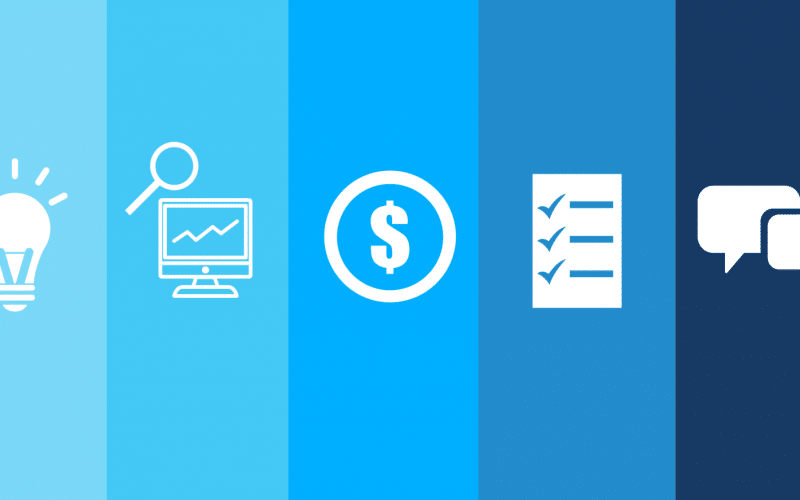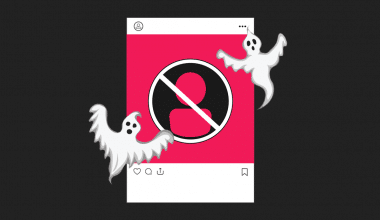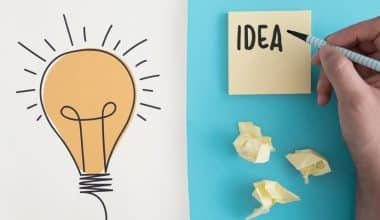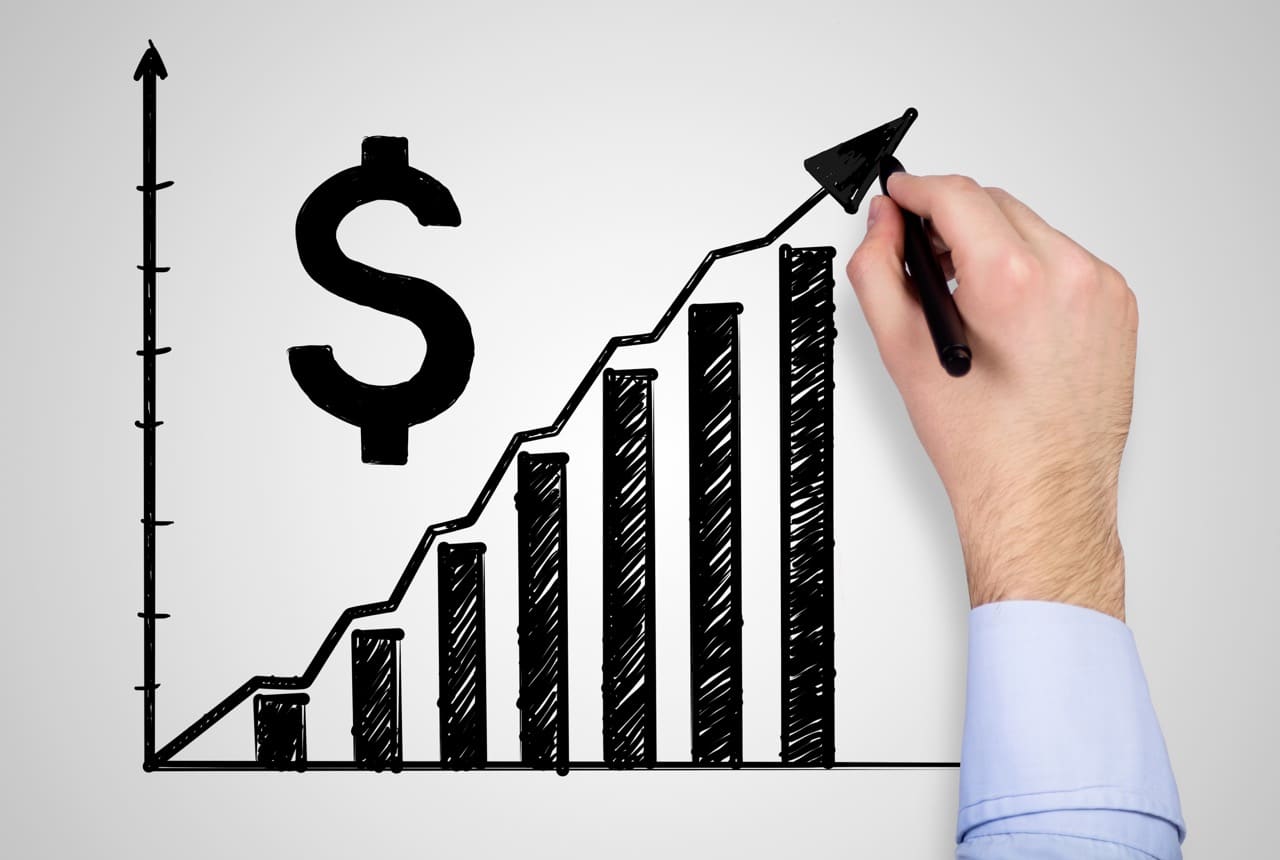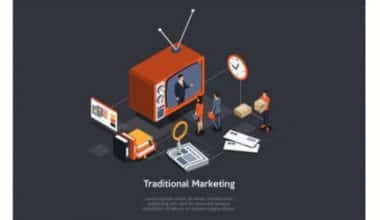It is no news that the today’s buyer is better informed than ever before because of the tremendous amount of information available at their fingertips. As a result, in most sales dialogues, the power balance has shifted from the sales agent to the buyer. This is why aggressive sales approaches aren’t as effective as they once were. In other words, to be successful in today’s market, sales reps must shift their approach from selling to helping. And the best approach to get started is to learn everything you can about the consumer and the route they would generally follow to purchase a product: the buyer’s journey.
So in clear terms, the buyer’s journey is the research and decision-making process that precedes a purchase. However, there’s a lot more to it…
Hence, we’ll look at what the buyer’s journey is, the stages it goes through, why it’s important, and how to design one for your target demographic. We’ll also discuss how to develop content that is relevant to the buyer’s journey and how this might help your inbound marketing efforts.
Let’s get started.
What is the Buyer’s Journey?
The buyer’s journey is a description of a customer’s process to making a purchase. In other words, buyers do not decide to buy on the spur of the moment. They go through a process of being aware of, considering, and evaluating a new product or service before deciding to acquire it.
Sales agents can better understand buyers and place their product or service along that route by understanding the buyer’s journey, the challenges and problems they face along the way, and the influencing elements that shape their thinking.
Why Is It Important to Know Your Customers’ Buying Process?
The buyer’s journey helps you understand the types of questions your buyers will have when looking for a solution to the problem you’re trying to solve. On the other hand, buyers who are just learning about their problems or looking into prospective solutions will want very different information than those who are ready to buy. The good thing is you can develop content that is better customized to your personas’ needs if you know what they are searching for at each stage of the buyer’s journey. So, instead of going out of their way to find you, they’ll come across you by accident while looking for information.
A ton of businesses concentrate their marketing efforts at the bottom of the sales funnel, hoping to reach customers when they are ready to buy. However, higher up in the funnel, there are several possibilities to earn a customer’s confidence and business. After all, 96% of website visitors aren’t even considering making a purchase.
This means you can later pitch yourself as the solution to their problem when they are ready to make a purchase choice if you can build a prospect’s confidence early on. You can improve the quality of your leads and receive a greater return on your marketing efforts by asking the right questions at each stage of the buyer’s journey.
Here are other details you should know about the importance of the buyer’s journey;
#1. The Buyer’s Journey Gives Value to Customers
Traditional marketing has a big flaw: it was not created to assist people. Outbound marketing employs strategies that scream for attention and tell them exactly what they need. It does not provide value to people’s lives by teaching them, as inbound marketing does.
The buyer’s journey is an important part of this evolved form of marketing because it allows companies to assist their consumers by offering educational content that helps them understand their problem and their options for fixing it.
#2. It Will Help You Sell Your Products/Services
You’ll have a high chance of getting your audience to engage with your website and eventually acquire a lead if you can generate content that assists them at each stage of their buyer’s journey. You can then nurture that lead with additional great content and excellent customer service until they become a paying customer. Let’s face it, isn’t that what we all want?
Your ideal consumer wants the right material at the right moment, which is whenever they require it, and in the format of their choice. You should always be able to supply customers with helpful, relevant content that will be actually useful and will aid them in advancing along their buyer’s journey if you create content aligned with the buyer’s journey.
The Proof Is in the Statistics
Another way to demonstrate the importance of the buyer’s journey – and correctly aligned content – is to use some key data…
- Rather than seeking a specific brand, 71% of B2B researchers start with a generic search.
- According to Forrester.com, by 2020, 80% of the buying process will take place without direct human interaction.
- Before making a decision to purchase, 65 percent of buyers spend more than 16 minutes comparing products.
- According to a DemandGen survey, 61 percent of respondents preferred providers who provided material tailored to each stage of the sales process.
- 8 or more pieces of content from the winning vendor were viewed by 52 percent of respondents.
- 86 percent of senior marketers believe that creating a consistent buyer’s experience is crucial.
- Leads nurtured with customized content have a 20 percent boost in sales possibilities.
This means that you must produce high-quality content that corresponds to each stage of the buyer’s journey. And in order for your audience to find your material, it must appear in search engine results for the relevant terms they will be searching for.
Read Also: Best Buyer Persona Templates & Tools in 2021: Free & Paid (Updated)
This is where keyword mapping and research come into play. A ton of experts have talked about how labeling keywords (discovered through keyword research) to stages of the buyer’s journey can help you develop content that will appeal to both people and search engines. This way, you’ll show up on search engine results pages, and your audience will be able to locate helpful content no matter where they are in the buying process.
Keyword research, keyword mapping, content design and creation, and content promotion are all steps in the content marketing process. Putting it all together requires a lot of effort and planning, which is where professional advisors from an inbound marketing agency may help. Alternatively, you can use internal resources to move forward. If done rightly, it can pay off in any case.
What Are the Three Stages of the Buyer’s Journey?
The following steps make up a customer’s decision-making process:
- The Stage of Awareness
- The Stage of Consideration
- And then “The Stage of Making a Decision”
As they move closer to making a purchase choice, the consumer will want answers to a distinct set of questions at each stage. It’s critical that you produce content offers that are appropriate for each stage of the buyer’s journey since if the consumer feels forced by the improper content offer or useless information, they may look elsewhere. However, if you appropriately match your content to their expectations, you may be able to earn their purchase and, as a result, boost each customer’s lifetime value when they return for repeat purchases or refer you to others.
#1. Awarewness (Researching)
A customer will often have a pain problem which leads them to explore in the Awareness Stage. But then they will not be exploring viable solutions just yet. They may just be aware that they have an issue. They just do not have an idea what questions to ask about it, let alone the whole extent of it. They’ll be seeking general information about the problem rather than remedies at this point.
For instance, if people keep waking up itching from unusual new bites, they can look up “Why Do I Keep Getting Weird Bug Bites at Night?” on Google.
What is the buyer doing during the awareness stage?
The buyer is dealing with a problem or pain symptoms, and their goal is to find a solution. They could be looking for informational resources to help them better grasp, frame, and name their issue.
#2. Consideration (Evaluating)
The buyer will expand on their previous research and begin exploring potential solutions to their problem during the Consideration Stage. By this point, the customer is aware that they have a problem and is prepared to learn about the many products and services available to solve it. They are, however, not yet ready to purchase a specific one and are attempting to learn about the benefits and drawbacks of each.
The buyer can use the search term “Pest Control Company in Las Vegas” to find a list of companies to investigate further.
What Is the Buyer Doing the Consideration Stage?
The buyer will have clearly defined and named their problem, and they will be dedicated to investigating and comprehending all available techniques and/or methodologies for solving the identified problem or opportunity.
#3. Decision
When a buyer reaches the Decision Stage, they’ve looked into all of their possibilities for solving their problem and are ready to buy a specific product or service. They’ll start by checking reviews, reading testimonials, watching videos, and more to learn more about it and the firm. Buyers today want to be well-informed before making a purchase, which offers you the chance to demonstrate why you are deserving of their business.
The customer may ask, “Do You Have a Satisfaction Guarantee?” at this point, and you’ll be able to show them excellent evaluations from previous clients as well as examples of the work you do.
What Is the Buyer Doing During the Decision Stage?
The buyer has chosen a strategy, method, or approach for their solution. Their next step is to develop a list of potential vendors, narrow down the field, and make a final purchasing choice.
Tailoring Your Sales Process to the Buyer’s Journey
With this in mind, buyers do not want to be prospected, demoed, or closed before they are ready.
#1. Awareness Stage
Recall that the problem or opportunity that buyers desire to explore is being identified at this point. They’re also debating whether the aim or challenge should be prioritized.
| What You Should be Asking | Actions You Should Be Taking |
| In the context of your business, how do buyers describe their goals and challenges? | Creating sales collateral that teaches them along their route to purchase, rather than being salesy. |
| How are your customers learning about these objectives or challenges? | Providing them with materials to aid in the identification of the issue. |
| What are the ramifications of the buyer’s inaction? | Prividing Assistance all the way… |
| Are there any common misunderstandings among buyers about how to achieve the goal or solve the problem? | |
| What factors do buyers consider when deciding whether a goal or a challenge should take precedence? |
#2. Consideration Stage
The goal or challenge has been clearly defined by the buyers at this point, and they have committed to addressing it. They’re now weighing the pros and cons of various approaches or methods for achieving their goal or resolving their problem.
| What You Should be Asking | Actions You Should Be Taking |
| What types of solutions do buyers look into? | Understanding how our product or service, in comparison to both direct and indirect competitors, solves their problem. |
| How do buyers get more knowledgeable about the various categories? | Taking into account how your direct and indirect competitors appear in the marketplace and how they affect perception. |
| What are buyers’ perceptions of the benefits and drawbacks of each category? | Providing the customer with materials to assist them in determining the best solution for them. |
| What factors do customers consider when deciding which category is best for them? |
#3. Decision Stage
Buyers have chosen a solution category and are now evaluating vendors at this point. They may, for example, have compiled a pro/con list of specific offerings in order to select the one that best meets their requirements.
| What You Should be Asking | Actions You Should Be Taking |
| What criteria do buyers use to assess the various options? | Knowing what objections they might have before to the sales process will help you deal with them effectively. |
| What do purchasers like about our company’s offering when they compare it to alternatives? | Ascertaining that you have a distinct selling offer that adds value to the buyer and distinguishes you from competition. |
| Who needs to be a part of the decision-making process? | |
| What are their reservations about it? | |
| What is the difference in each person’s perspective on the decision? | |
| Do customers expect to be able to try the product before purchasing it? | |
| Do buyers need to make any further preparations outside of purchasing, such as implementation plans or training strategies? |
Some of these factors may come more under the marketing than the sales umbrella, but the answers to these questions will eventually create a solid basis for your buyer’s journey.
As you design or refine your sales process, getting to know how your buyers buy is crucial. You’ll be able to understand prospects, deal with objections, and deliver the right information at the right moment, all of which will help you close more deals and gain more traffic.
Buyer’s Journey Map
A buyer’s journey map is a diagram that depicts the steps a customer or prospect takes to achieve a goal with your firm. The aim could be anything from making a purchase to signing up for a newsletter to joining a loyalty club. You’ll have a better grasp of what will encourage your consumers to attain these objectives with the help of a buyer’s journey map.
Understanding the buyer’s journey, on the other hand, isn’t enough. It’s advisable to turn this convoluted journey into a map that you and your coworkers can use as a reference. Here’s when creating a client journey map comes in handy.
What Does a Buyer’s Journey Map Include?
Significant milestones in the buyer’s journey are depicted on a buyer’s journey map. You’ll start by sketching out the path your company wants a client to take to achieve a goal. You’ll then list each level horizontally using the normal purchase process stages.
This section of the buyer’s journey map describes what a consumer performs at each step of the purchasing process. In the awareness stage, they may talk to friends and family about their wants and possible solutions to meet those needs. They might then watch a demo on your website before making a purchase with cash or a debit card. This section delves into the many options available to your consumers in order to attain the goal.
Regardless of how big or little the goal is, keep in mind that your consumers are trying to solve a problem. Also, that they’re presumably experiencing some sort of emotion, whether it’s relief, happiness, enthusiasm, or worry. If your process is lengthy or complex, they may experience a variety of emotions at various stages. Including these feelings in the buyer’s journey map can help you attenuate unfavorable journey emotions so they don’t turn into poor brand perceptions.
Wherever there is a negative emotion, there is a source of it. Adding pain points to your buyer’s journey map might help you figure out which step of the journey your customer is having unpleasant emotions and why.
Solutions are the final component of your buyer’s journey map, and this is where you and your team will explore new methods to improve your purchase process so that customers have fewer pain spots and are in a better mood while patronizing your business.
What is a Touchpoint in the Buyer’s Journey Map?
In a buyer’s journey map, a touchpoint is a point at which your customer can create an opinion about your company. Touchpoints are locations where your company interacts directly with a potential or existing customer. A consumer touchpoint can be a display ad, an encounter with a staff, a 404 error, or even a Google review.
So, because your brand extends beyond your website and marketing materials, it’s critical to include the various types of touchpoints in your buyer’s journey map because they might reveal chances for improvement in the purchasing process.
How to Create a Buyer Journey Map
The following are effective steps to creating a Buyer Journey Map
#1. Clearly Define the Map’s Goals
Before you start designing your map, you should consider why you’re making one in the first place. What goals are you aiming towards with this map? Exactly what is it about? What kind of experience has it been based on?
You might wish to construct a buyer persona based on this. This is a hypothetical consumer who represents your average customer in terms of demographics and psychographics. It’s easier to remember to aim every component of your buyer’s journey map towards them when you have a defined persona.
#2. Create Personas and Outline Their Objectives
The next step is to undertake research. Questionnaires and user testing are two excellent ways to obtain meaningful client feedback. The most crucial thing to remember is to only contact actual customers or prospects.
You want feedback from people who are truly interested in buying your products and services and have previously interacted with your firm or plan to do so in the future.
The following are some examples of appropriate questions to ask:
- What brought you to our company?
- What drew you to our website in the first place?
- Exactly what are the objectives you aim to accomplish with our firm? To put it another way, what challenges are you attempting to solve?
- How much time do you usually spend on our website?
- Have you ever purchased something from us? If so, what influenced your decision?
- Have you ever visited our website with the intention of making a purchase but ultimately decided against it? If that’s the case, what factors influenced your decision?
- How easy is it for you to explore our website on a scale of 1 to 10?
- Have you ever needed assistance from a customer? If so, on a scale of 1 to 10, how useful was it?
- Is there any way we can assist you further to make your procedure go more smoothly?
#3. Make Your Target Client Personalities Stand Out
You’ll need to focus on one or two of the many client personas that connect with your organization once you’ve learned about them. Remember that a buyer’s journey map is a visual representation of one customer’s experience with your firm along a certain path. Your map will not truly reflect your customers’ experience if you group too many personalities into one route.
If you’re making your first map, examine your most common client profile and the path they’d follow if they were engaging with your company for the first time. You can compare them using a marketing dashboard to see which one is the best fit for your route map. Don’t worry if you forget some; you can always go back and develop a new map that’s tailored to these consumer kinds.
#4. Make a List of All Touchpoints
All of the places on your website where your clients can interact with you are known as touchpoints. Based on your study, make a list of all the touchpoints your customers and prospects are using now, as well as the ones you believe they should be using if there is no overlap.
This is a crucial stage in building a buyer’s journey map since it allows you to see what actions your consumers take. Is it possible that they are being turned away and leaving your site early because they are using fewer touchpoints than expected? Is it possible that they are utilizing more than planned since your website is difficult and takes users to go through multiple steps to reach their goal?
Whatever the situation may be, knowing the touchpoints is a useful tool for determining the ease and goals of client journeys.
This isn’t only referring to your website. You should consider all of the methods your customer could find you on the internet. These could include the following:
- Social media platforms
- Paid Advertisements
- Email Marketing
- Third-party review sites or mentions
To find all the pages that reference your brand, do a simple Google search for it. Check your Google Analytics to determine where your traffic is coming from to verify these.
Reduce your list to the touchpoints that are the most common and will be the most likely to result in a response.
Actions
Furthermore, make a list of all the things your customers do when they interact with your brand. This could be as simple as doing a Google search for your keywords or opening an email from you. You can end up with a large to-do list. That’s all right. Later on, you’ll have the opportunity to justify your data.
It’s essential to notice when clients are being asked to perform too many actions in order to attain their objectives. It may feel dangerous to reduce the number of actions a consumer must do, but it pays off in greater conversion rates.
Motivations & Emotions
Cause and effect is at the heart of all marketing. Similarly, your customer’s every action is motivated by emotion. And depending on where they are in their journey, your customer’s emotions will shift.
A pain point or a problem is usually the emotional motivator behind each of your customer’s actions. Knowing this will assist you in providing the right content at the right moment to ensure that the customer’s emotional journey through your brand is as smooth as possible.
Obstacles & Aches & Pains
Learn what obstacles are preventing your customer from taking the desired action. Cost is a common stumbling block. One of your consumers, for example, may adore your goods but depart it after discovering unexpectedly hefty delivery costs.
These possible roadblocks in your customer journey can be identified and mitigated by highlighting them. You may, for example, create a FAQ page that addresses frequently asked queries about shipping charges.
#5. Determine the Resources You Have and Which You Will Need
Your buyer’s journey map will touch on almost every aspect of your company. This will draw attention to all of the resources used to create the customer experience. As a result, it’s critical to inventory your current resources as well as the ones you’ll need to improve the customer experience.
For instance, perhaps your map reveals some faults in your customer service offering, and you discover that your staff lacks the tools necessary to appropriately follow up with customers following a service engagement. You can recommend to management that they invest in customer service tools that will help your team manage consumer demand using your map.
You can also effectively estimate how these new tools will impact your business and produce outsized value by integrating them in your map. This makes persuading gatekeepers and decision-makers to invest in your initiatives much easier.
#6. Go On a Customer Journey With Them
Just because you’ve finished designing your map doesn’t imply you’re finished. The most crucial step in the procedure is to analyze the results. How many people visit your website but then leave without purchasing anything? What can you do to improve your customer service? These are some of the questions a completed map should be able to answer.
Analyzing the data can help you identify areas where customers’ requirements aren’t being satisfied. By tackling things in this manner, you can ensure that you are giving a valuable experience and that individuals can solve their difficulties with your company’s assistance.
However, until you try it out for yourself, the entire task of mapping the client journey remains speculative.
Follow each of your customer’s journey from their social media engagement to their email reading to their web searches and so on.
#7. Make the Necessary Modifications
Your data analysis should help you figure out what kind of website you desire. You can then make the necessary changes to your website to meet these objectives. Perhaps this is resulting in clearer call-to-action links. Perhaps it’s adding lengthy descriptions to each product’s page to make its purpose more evident.
Changes will be beneficial regardless of how big or small they are because they are directly tied to what customers mentioned as their pain points. Rather of making adjustments haphazardly in the hopes of improving client experiences, you can be confident that they will. You can also ensure that those demands and pain areas are always handled with the help of your visible buyer journey map.
Your map should be a work-in-progress at all times. You can find gaps and chances for further optimizing your client journey by reviewing it on a regular or quarterly basis. Check for any barriers using your data analytics and consumer feedback.
Content for the Buyer’s Journey
Okay, so telling you to create outstanding content is a little self-evident and unhelpful. The real questions are; What should the appearance and feel of your material be? What should the format be? How should it relate to the buyer’s journey’s Awareness, Consideration, and Decision stages?
For starters, your buyer personas (semi-fictional projections of your ideal clients) will influence the material you develop, as well as the structure you use. Some personas will favor blog postings, while others will prefer video content, and still, others will prefer charts and tables. And depending on which of your characters you’re targeting, the focus of your content will certainly change.
The buyer personas examples below shows why content needs to be different:
- Marketing Marvin is a marketing manager who is focused on increasing traffic and generating leads. The majority of Marvin’s information comes from industry blogs and publications.
- Sally Sales is a sales manager who is more concerned with refining sales processes and acquiring new customers. Sally not only reads professional websites, but she also watches a lot of video.
Despite the fact that they are both potential customers, it’s easy to see how these two personas would demand different content to meet their needs and address their problems.
You won’t be able to provide targeted content in an acceptable format unless you construct buyer personas, and you won’t be able to map the right buyer’s journeys for your audience unless you do.
In general, you can develop content that you know will be relevant and valuable using personas, and you can design content to engage personas at every point of the buyer’s journey with the right content for each persona.
What Is the Best Way to Map Content to a Buyer’s Journey?
Now that you’ve learned a little about the advantages of the buyer’s journey, it’s time to think about how you can include it into your marketing approach. Here’s how to get started if you want to undertake buyer’s journey mapping for your own company:
#1. Create Buyer Personas
Yes, we’ve already discussed how important buyer personas are, but having them in place makes describing your audience’s buyer journeys a lot easier. How can you generate useful content if you don’t understand their challenges, requirements, motivations, and goals?
Take a look at our in-depth guide to buyer personas if you want to learn more about this stage of the process.
#2. Recognize the Path Your Buyers Take:
After you’ve figured out who your buyers are, the next step is to figure out how they go about buying anything.
3. Content Should Be Mapped to the Buyer’s Journey:
After you’ve created your personas and journeys, the next step is to create content that tackles the issues they confront at each stage. The content’s purpose should be to properly address the buyer’s problem so that they feel comfortable moving on to the next step of the process, as well as to assist them in doing so.
Examples of the buyer’s journey
Let’s look at some buyer’s journey examples to better understand how the process works and how it might lead to content that will interest your audience.
John is a harried software programmer who rarely has time to sweep his flat fully. Let’s follow him on his shopping trip to the Acme iRobot, a vacuum-cleaning robot.
| Stage | Content Goal |
| Trigger and Develop Interest | Make John aware that dust accumulation in the home is unpleasant and can cause health problems. |
| Obtaining Information | Give John further information regarding the problem, such as the link between specific health problems and the accumulation of dust in the home. |
| Look for Alternatives | Make John aware of possible solutions to the problem, such as hiring a cleaning service on a regular basis or using new technologies. |
| Make a Buying Decision | Assist John in seeing the advantages in picking an iRobot over other options, as well as Acme over other vendors. |
As you can see, the process is rather rational, and creating content to address your audience’s needs as they progress through their buyer’s journey is not difficult.
As potential buyers progress through the stages of the buying process, certain kinds of search terms and phrases emerge, which can help you determine the type of content that would be most beneficial and thus engaging for them.
Terms like “‘troubleshoot,’ ‘resolve,’ and ‘enhance’” are often used at the awareness stage. At the consideration stage, terms like solution, “‘service,’ and ‘tool’ are frequent, whereas, at the decision stage, terms like ‘compare’ and ‘review’ are common.
When planning content for the buyer’s journey, evaluating search phrases and their reasons might be useful, but they are far from conclusive and should be utilized as guides rather than rules.
How to Implement the Buyer’s Journey in Your Marketing Strategy
You’ll need to learn more about your target demographic before you start implementing the buyer’s journey in your marketing strategy. Begin by downloading our free buyer persona template, which will assist you in identifying the pain points and characteristics of each buyer persona who utilizes your service. You can then tailor information to their specific needs and guide them through the buyer’s journey.
How Much of the Buyer’s Journey Is Digital?
The buyer’s journey is digital for more than half of the time. This is why:
- During the awareness stage, a customer will use the internet to further describe their difficulties.
- A buyer will look for suitable businesses to help solve the problems on the internet, and
- Solutions to problems may also be available online, depending on the nature of the issue.
According to some estimates, the buyer’s journey is digital for 67 percent of the time.
Buyer’s Journey FAQs
What is a buyer's journey?
The buyer’s journey explains a customer’s route to purchase. They go through a process of becoming aware of, considering, and evaluating a new product or service before deciding to purchase it.
What are the stages of a buyers journey?
Before becoming a customer, every buyer goes through three main steps in the buying process: awareness, consideration, and decision. Companies may fine-tune their marketing efforts to attract the best target demographic for their product or service by understanding the buyer’s journey.
Why is the buyer's journey important?
Understanding your customer’s buyer journey is essential for developing effective, targeted inbound marketing initiatives that provide results. Furthermore, understanding your customer’s buyer journey is critical for developing effective, targeted inbound marketing initiatives that provide results.
